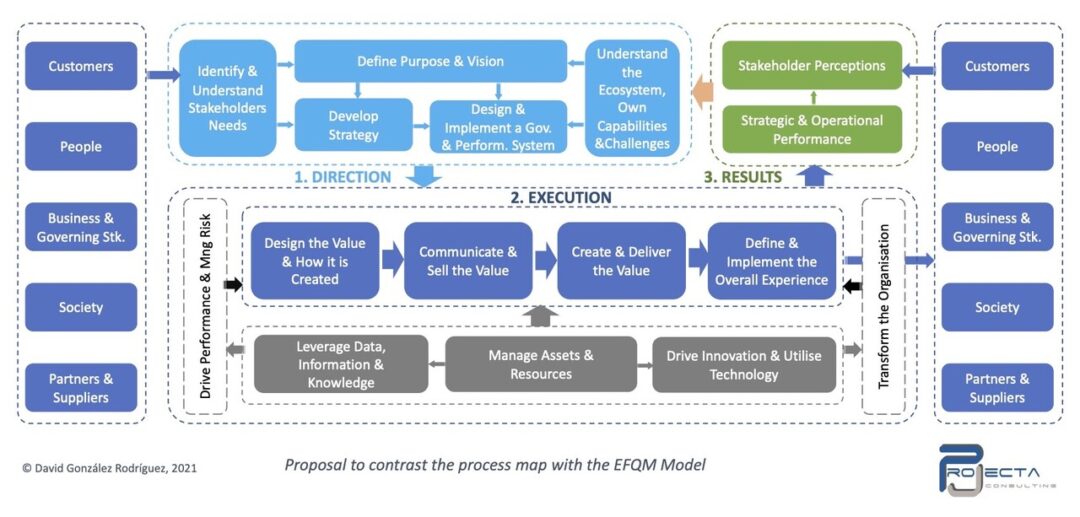
The implementation of an effective process-based management is a global change management project that affects the organization culture (in particular, the relationship between people), resources (in particular, technological tools) and systems (in particular, management procedures). Therefore, we have to start from the “Vision of change” desired. The process map is a very powerful communication tool for this Vision. For this reason, I consider that a draft of the map has to be painted from the beginning of the project, although it will be changed later as we discover and better understand the real structure of the organization’s processes.
Identifying the macro processes that make up this initial map is not a complicated task. We have to carry on an analysis of the organizational structure and of the functions carried out by each unit or department and, afterwards, we can contrast the result with a complete reference of processes such as the APQC Process Framework (www.apqc.org), which is updated periodically.
Many organizations are interested in drawing the Process Map while implementing their first Quality Management System. This is when the organization understands and assumes the PDCA cycle or Deming cycle as a strategy for continuous improvement. The process structure itself should be the framework in which that continuous improvement is ensured.
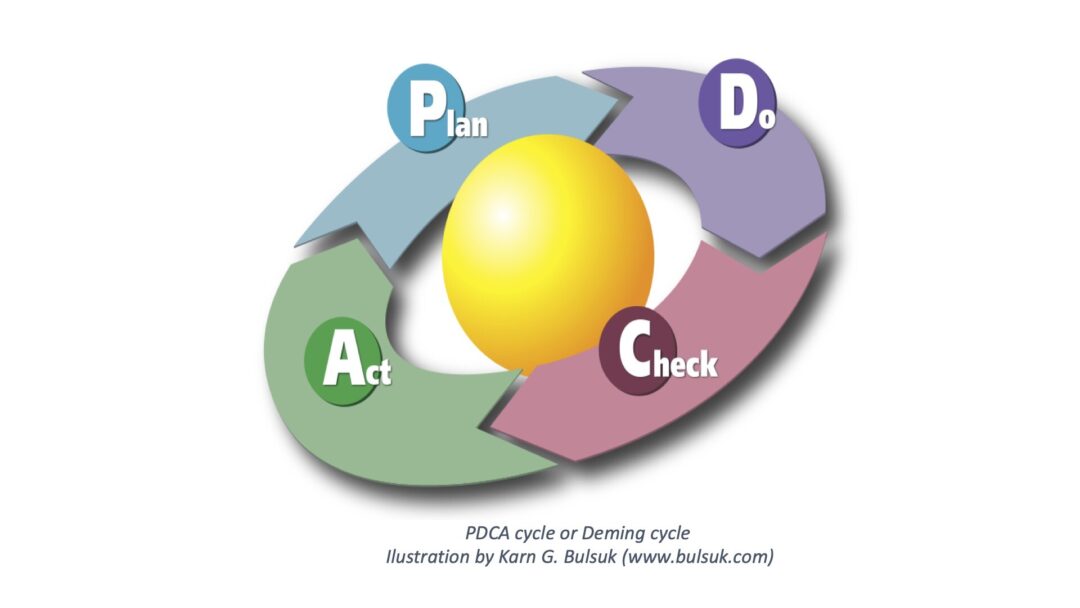
The most common structure of the process map places the value chain in the middle of two groupings of processes, the strategic (above) and the support (below):
• In the upper block -strategic processes-, the guidelines, controls and methods that are needed for the execution of the operational and support processes are generated.
• In the lower block –support processes-, the necessary resources are provided for the creation of value.
• At both ends of these three groupings of processes are usually located the main stakeholders, from whom their needs are collected and to whom the value generated by the organization is delivered.
Personally, I prefer to divide the strategic process block into two, one to define and plan, and another to review and improve, leaving the structure of the process map (level 1 in the process architecture) as shown in the following figure:
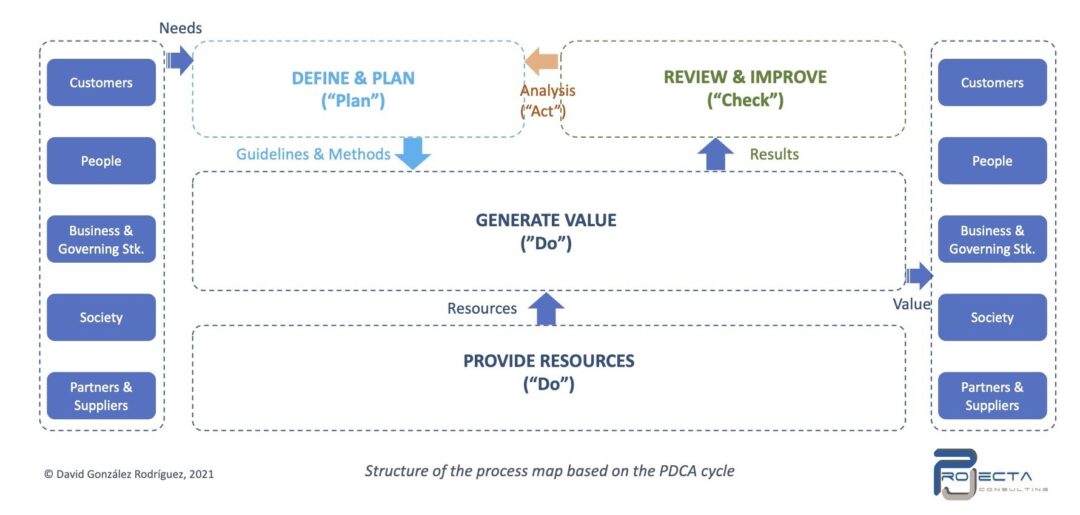
In this way, the same logic of continuous improvement of a process is applied to the entire organization. In the end, all the processes come together in a single result of “creating value for stakeholders”. Now, what does each of the process blocks contain (level 2 in the process architecture)?
As a proposal, I usually use the following template and then I adapt it to each organization to draw the initial draft:
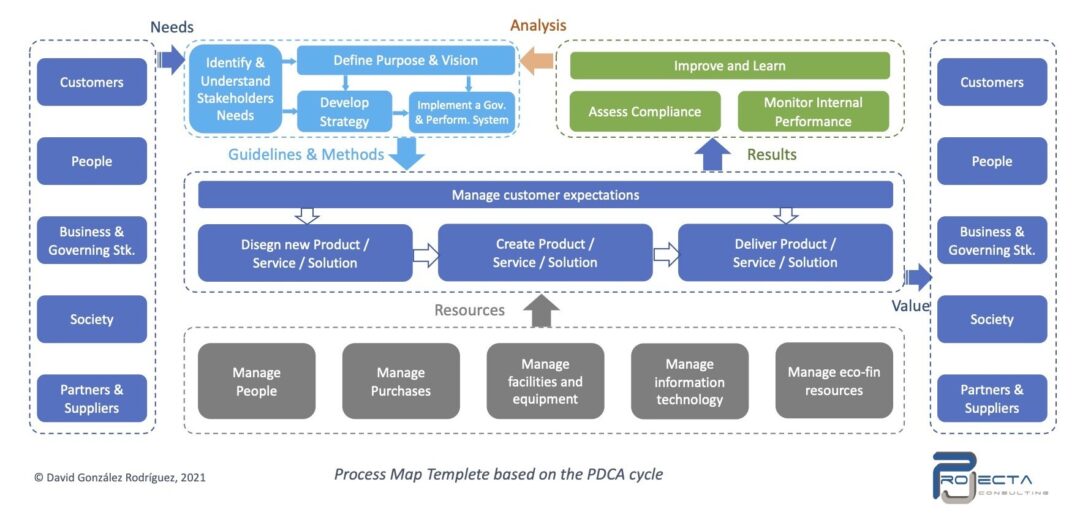
Following the same scheme, we can try to draw a draft process map that reflects the criteria of the EFQM model, so that the most advanced organizations assess the processes necessary for their management:
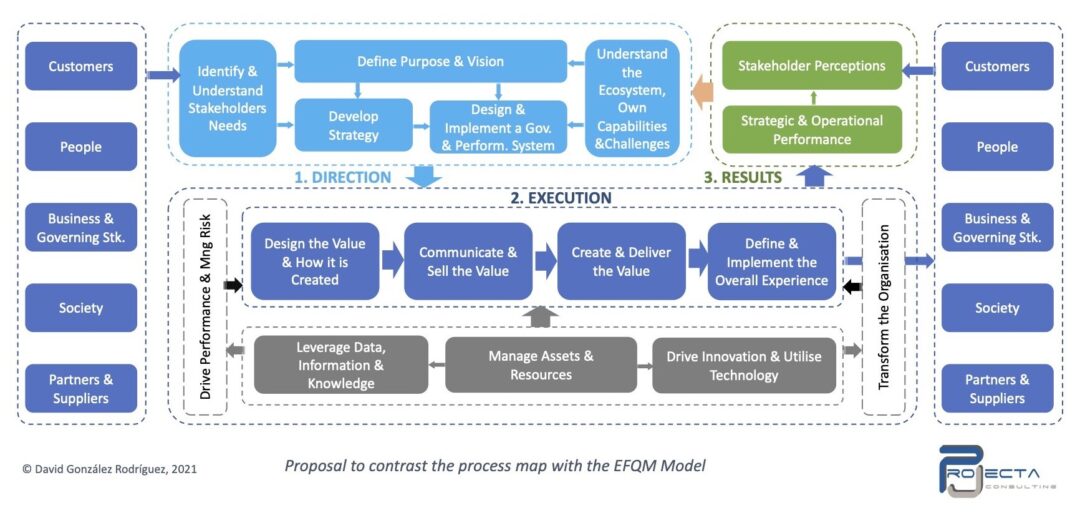
I am looking forward to deploying to levels 3 and 4 of the process architecture in EFQM organizations, using this template to make the appropriate corrections derived from its specific application. In particular, to develop the fit of new support processes, related to the use of new technologies and information sources, that are included in the EFQM Model.
